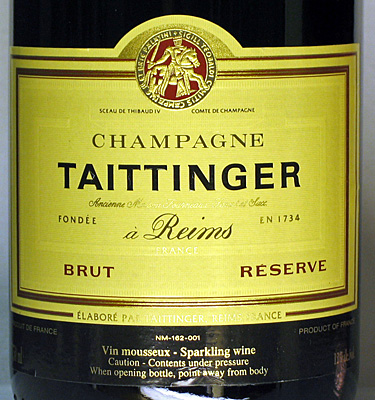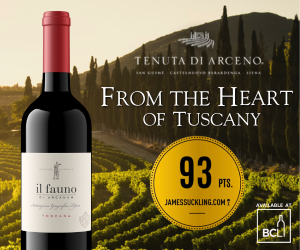As another year slips into the history books or some databank deep beneath the earth, all that's left is to usher in the new one.

How you choose to welcome the New Year is up to you, but should you decide to have a drink or two, we suggest you can't go wrong with something bubbly.
Given the celebratory nature of New Year's Eve, it is likely there will be sparkling wine involved . You may want to consider serving champagne, the world's finest sparkling wine, because New Year's only happens, well, once a year.
I have been excited by the obvious rise in quality in sparkling wine over the past two decades but very few, if any, can match the electricity a single glass of champagne can transmit to the palate. There may be no other single wine so closely linked to its appellation or site than champagne, and that, in a clam shell or ancient mol-lusk, is the difference between sparkling wine and Champagne.
The Champagne region was once an inland sea said to have covered most of France until some 70 million years ago. An earthquake caused the ancient chalky seabed to rise and the resulting landscape was littered with massive deposits of the fossilized remains of various sea creatures ranging in depths from 100 to 300 metres. No other large deposits of chalk in Europe contain so many fossils, making the soils in the Champagne region unique. Maybe that's why raw oysters have such an affinity for champagne.
That said, champagne is so much more than oyster fare. To many it is considered one of the greatest 'food' wines in the world. If only more people knew it. Some of my most memorable meals began, continued and finished with champagne.
Years ago, I found myself at a pre-dinner reception at Veuve Clicquot where global guests mingled, as waiters poured Veuve Clicquot La Grande Dame from magnums, the single best bottle size for aging any champagne. As the reception wound down, we were strategically divided up into small groups and escorted to private dining rooms for one-on-one dinner to discuss the intricacies of our home markets. It was here that the multi-
course champagne dinner light turned on for me.
The foundation of a classic food and wine match begins with acidity and champagne has that ingredient in spades. Be the food salty or rich, creamy or oily, acidity is a magical wand that settles any wine matching issues. Complex, effervescent and dry, champagne has the ability to readily tame the wild flavours of game or simply set off the classic gougère before the dinner starts.
Interestingly, near the end of the meal the last two champagnes were decanted into elegant, plain glass decanters. As spectacular as champagne looks in a decanter I was aghast that so many precious bubbles were being dispersed at such an alarming rate. When I asked my host why on Earth anyone would decant champagne, the first reply was a deadpanned "because we can." And you know what? I suppose you can when you are sitting on millions of bottles.
In the end, the French were just being sensible. Decanting further reduces the amount of pressure or bubbles in the glass and near the end of a long night it is simply easier to digest.
Thinking back on that magical evening and its menu pairings, we are suggesting a number of champagnes available in B.C. to best illustrate the flexibility of this amazing wine at the dinner table or at least as a glass of wine when the clock strikes 2013.
Champagne is currently facing somewhat tougher times in France and Britain - in fact much of the European Community is experiencing depressed sales, but volumes are surging in Russia and the Far East and more recently in the U.S.
Here in Canada, prices have firmed up into a tight window of somewhere between $55 and $70 for most multi-vintage bottles, known more commonly as non-vintage Brut.
Today's picks represent some of the best and largest-selling labels in the market. You should have little problem locating any in government and private wine stores. Happy New Year one and all.
de Venoge Cordon Bleu Brut Select N/V, Champagne, France
Price $60 | Score 90/100
UPC 03291690500018
Cordon Bleu is a blend of Pinot Noir, Chardonnay and Pinot meunier with a clean green apple, honey, citrus, baked pear nose with mineral and toasted butter notes. A medium brut with a touch of sweetness and a creamy palate, it has plenty of persistence in the mouth.
Taittinger Brut Reserve N/V, Champagne, France
Price $62 | Score 91/100
UPC 3016570001030
Finesse and consistency are Taittinger trademarks along with a toasted nose of baked pear, light strawberry and citrus. The attack is fresh, clean and dry in a tight, elegant style. The flavours combine citrus, baked green apple, honey and strawberry with a clean, delicious finish. Try this with sushi.
Charles Heidsieck Brut Reserve (Dégorgement 2009) N/V, Champagne, France
Price $65 | Score 92/100
UPC 03037900002787
Fans of Middle Eastern foods may be surprised to learn that champagne can be friendly to the coarser textures of hummus and baba ghanoush, as well as empanadas and deep fried foods. It has an inviting brioche nose with baked apple, honey and cream aromas.
Pol Roger Cuvée de Reserve Brut, Champagne, France
Price $66 | Score 90/100
UPC 089744142450
You will love the fine persistent mousse and its ethereal floral, baked apple, toasted nut and citrus aromas. So fresh and attractive and typical Pol Roger, mixing elegance, creamy textures and fruit effortlessly. The palate is reminiscent of baked green apple, honey and citrus-soaked nuts.
Louis Roederer Brut Premier N/V, Champagne, France
Price $64.00 | Score 94/100
UPC 3114080016053
If you prefer a more sophisticated brut, Brut Premier is it. It is easily one of the most consistent styles in the market with its nutty, floral, citrus nose, bits of red fruits and a whiff of oyster shell. The entry is refined with crisp, creamy mousse textures, more nutty, strawberry, citrus fruit flavours and a biscuity finish.
Dom Pérignon 2003, Champagne, France
Price $213.50 | Score 94/100
UPC 03185370041710
As warm and dry as 2003 was in Europe, winemaker Richard Geoffrey decided to declare a Dom Pérignon vintage in 2003. It has turned out to be a very big champagne with more power and minerality than finesse and acidity, at least at this point, but it should still have wide appeal for most Dom drinkers.

 quicksearch
quicksearch





